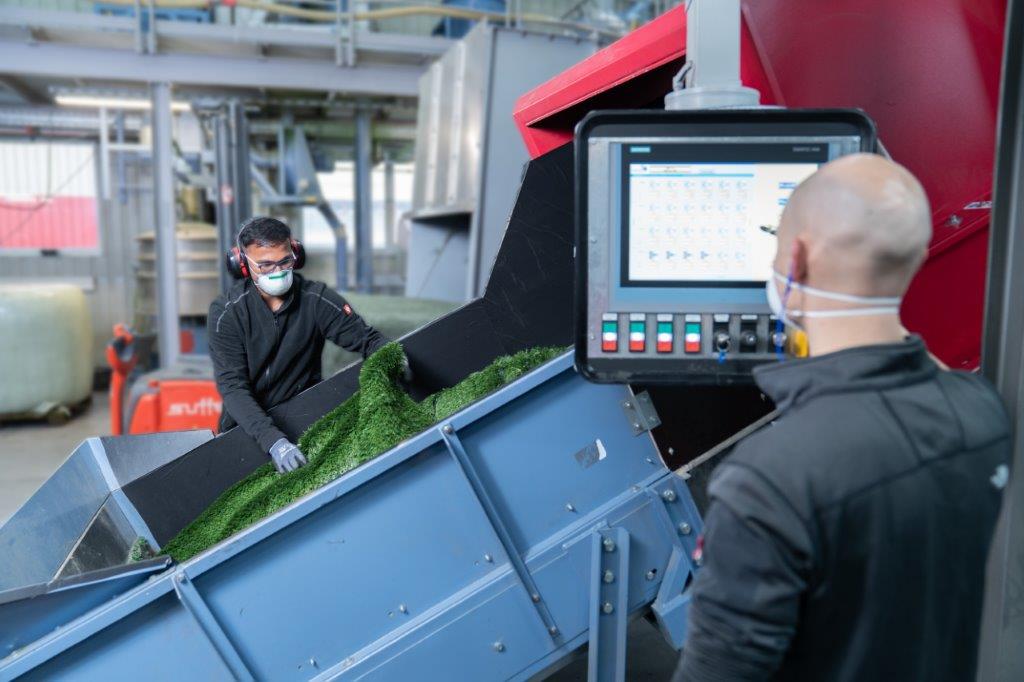How the Filament for Artificial Turf Material Is Produced
Producing various types of filaments for artificial turf material is executed simultaneously in several lines in one continuous process. The ingredients are mainly polyethylene granulate, color pigments, and a UV protection agent. The raw materials are all automatically conveyed into the dosing system, mixed together, and melted in an extruder. The resulting mixture is routed through a spinneret and pressed into a filament. The filaments are subsequently cooled down in a water bath. After the product exits the water bath, the filaments are briefly heated up again in additional stages, stretched into length, and then slightly relaxed again. The filament is automatically wound onto bobbins (yarn spools), when it reaches the end of the extrusion line. The yarn spools are then automatically conveyed to the quality control process at the end of the line.

State of the Art Technology
The production process is executed in state-of-the-art extrusion lines and is supervised by our production employees. They are responsible for implementing production orders and monitoring the lines so the required quality, produced in the desired quantity, can be delivered to our partner FieldTurf at the right time. Production tasks include preparing and operating the line, changing over products, and finally logging and documenting shift sequences and production results.
Creating New from Old
Our production process includes recycling old artificial turf material. We have developed a technology to produce new artificial turf products from old artificial turf material. Thus, we can ensure that old artificial turf material does not become unwanted plastic waste but can replace new petroleum-based plastic as a valuable raw material.

Ongoing quality assurance
Our production employees implement simple quality assurance measures, readjust the extrusion line parameters within the framework of the stated specifications, and therefore contribute to the improvement of production processes. A high level of attention is required in production in order to detect errors in the process and thereby counteract possible quality problems or line defects.
Occupational safety and quality assurance are always the top priorities in our production area.
Diverse Tasks in Production
Most of our production employees work in shifts and operate the extrusion lines. Depending on their personal job profile, they work jointly as a team in the final inspection process, on the production line, in the laboratory, in machine operation or in shift management. Our production team is supplemented by the Production Management Department and Production Assistance Department.
Apply now
Have we piqued your interest in joining a great team? We look forward to receiving your application—for all areas of the company.